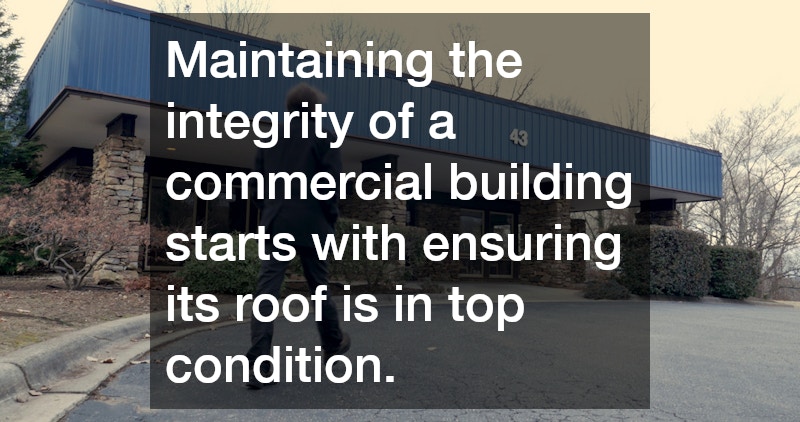Keeping a commercial property in good condition requires more than just maintaining the interior or exterior walls. The roof is one of the most critical parts of any building, yet it is often overlooked until problems become too severe to ignore. Commercial roofs face unique challenges due to their size, design, and exposure to the elements. Without proper attention, issues like leaks, water pooling, or damaged materials can cause costly disruptions to your business. Fortunately, timely commercial roof repairs can resolve these problems effectively and extend the lifespan of your building’s roof.
Addressing Persistent Leaks
One of the most frequent issues commercial property owners face is roof leaks. They can stem from multiple causes, including poor installation, aging materials, or storm damage. Leaks may seem minor at first, but they can quickly spread water throughout the building, damaging insulation, drywall, and even electrical systems.
Repairs focus on locating the precise source of the leak rather than simply patching the visible signs of damage. By sealing seams, replacing compromised sections, and improving drainage, professional roofing teams ensure that water no longer infiltrates the structure. Correcting leaks early also prevents mold growth, which can pose health risks to occupants.
Eliminating Ponding Water
Flat and low-slope roofs, common in many commercial buildings, are especially vulnerable to water pooling. When water sits on the roof for more than 48 hours, it increases the risk of leaks, structural stress, and material deterioration. The weight of standing water can also shorten the life of the roof by straining its support system.
Repair solutions often involve reworking drainage systems, such as installing tapered insulation or adjusting scuppers and gutters to promote better water flow. Technicians may also reinforce roof membranes to handle minor imperfections that allow water to gather. These interventions not only eliminate immediate risks but also create a more durable surface capable of handling future storms.
Fixing Damaged Flashing
Flashing, the protective metal or membrane installed around roof edges, vents, and HVAC units, is essential for keeping water out of vulnerable joints. Over time, flashing can crack, lift, or separate due to weather exposure and normal wear. Once flashing fails, water can penetrate these weak spots and travel inside walls, often causing extensive hidden damage before the issue is noticed.
Repairing flashing involves resealing or replacing the affected areas to restore their protective barrier. Skilled roofers ensure the new installation is properly anchored and weatherproofed, reducing the chances of recurring problems. This step is especially important for businesses with heavy rooftop equipment that depends on well-sealed penetrations.
Repairing Membrane Punctures and Tears
Commercial roofing systems that use single-ply membranes, such as TPO or EPDM, are susceptible to punctures. Foot traffic from maintenance crews, dropped tools, or flying debris during storms can create small tears that grow larger over time. Even small holes can allow water to seep beneath the surface, causing insulation damage and undermining the roof’s structural integrity. Timely commercial roof repairs can seal these vulnerabilities before they spread and ensure the roof continues protecting the building.
Repair crews patch punctures using heat-welded materials or adhesive-backed patches designed to integrate with the existing system. These fixes provide a seamless bond that restores the roof’s waterproof barrier. Preventive measures, such as installing walk pads in high-traffic areas, can also reduce the likelihood of future damage.
Correcting Poor Installation
Sometimes the greatest challenge is not age or weather, but poor workmanship from a previous installation. Mistakes such as inadequate sealing, improper fastening, or misaligned materials can lead to premature roof failure. Business owners may notice recurring leaks, loose sections, or uneven surfaces long before the roof reaches its expected lifespan.
Through targeted repairs, experts can correct these deficiencies without the need for a full replacement. They focus on reinforcing weak areas, ensuring seams are watertight, and securing loose components. By addressing these installation flaws, property owners gain peace of mind knowing their roof is performing as intended.
Strengthening Against Weather Damage
Commercial roofs endure a constant battle with the elements. High winds can lift membranes, hail can cause dents or punctures, and heavy rain can test the limits of drainage systems. Over time, repeated exposure to extreme weather weakens the roof’s defenses.
Repairs after a storm often include resealing seams, reinforcing vulnerable sections, and replacing damaged materials. These efforts restore the roof’s resilience and help protect the business inside from further harm. By investing in repairs rather than delaying them, owners avoid more extensive replacements caused by cumulative weather damage.
Maintaining the integrity of a commercial building starts with ensuring its roof is in top condition. From leaks and ponding water to damaged flashing and membrane punctures, the problems that threaten a roof can quickly spiral into larger, more expensive issues if left untreated. Fortunately, professional repair services provide effective solutions that restore the roof’s strength, protect the building’s interior, and extend the system’s lifespan.
Timely commercial roof repairs not only address existing problems but also serve as a preventive measure against future damage. They help businesses avoid interruptions, reduce long-term costs, and protect valuable assets. By working with skilled professionals who understand the complexities of large roofing systems, property owners can feel confident that their investment is secure. In the end, the peace of mind and stability gained from proper roof care are well worth the effort.




